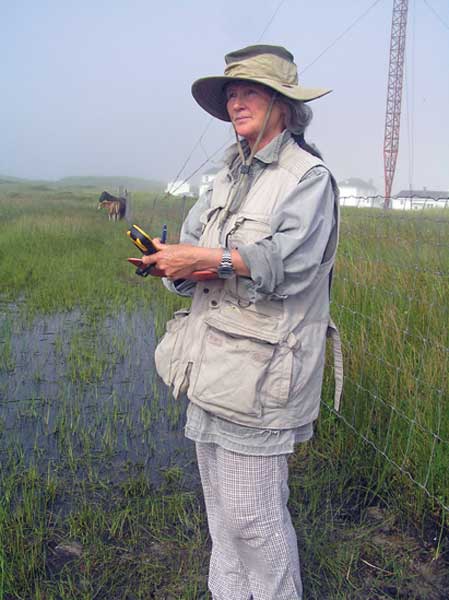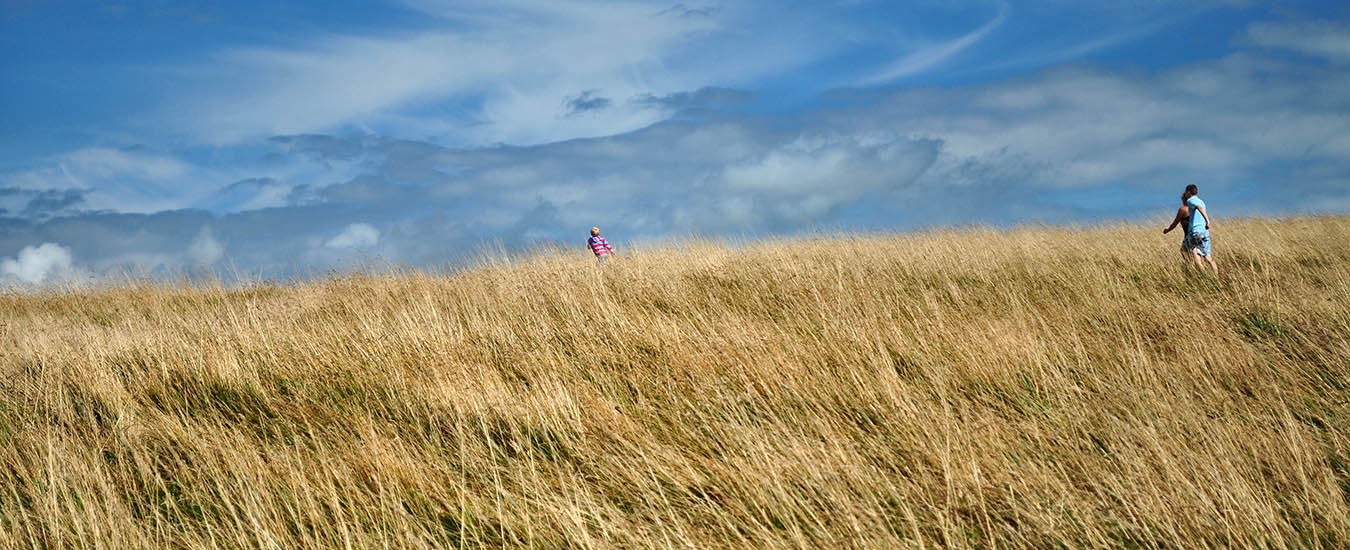How a childhood love of horses and open fields led Zoe Lucas to make a remote island her raison d’être.
I first saw Zoe Lucas, a wide-brimmed hat shading her face, standing beside her ATV on the landing strip—which, on Sable Island, is simply hard-packed beach sand. We had flown in for the day; Zoe was to be our guide.
Zoe first visited Sable Island in 1971, and has since lived there nearly full-time for 27 years, helping to understand the isolated environment and its place in the wider world. She has collected all manner of specimens, from lichen to walrus skulls and litter, and contributed to dozens of articles on topics as varied as cetacean strandings, the health status of harp and hooded seals, oiled seabirds, and pregnancy rates in Sable mares.
She deals with scientists, politicians, oil and gas personnel and sailors, and assists the work of painters, photographers, filmmakers, authors and musicians. Her new book, Natural Sable Island, is slated to be published this year.
In 1994, she escorted Mordecai Richler and Pierre Trudeau on a hike up Bald Dune, Trudeau bounding ahead up a steep slope. She has given hundreds of school talks and public presentations, noting, “You can string any kind of lesson along the string of Sable Island.”
It was a coincidence that I was able to go to Sable Island, the lucky result of working on a raffle committee at a literary event in River John, NS. I discovered that coincidences had originally taken Zoe there, too.
The first coincidence was when she was a jewelry student at the Nova Scotia College of Art and Design (NSCAD), in Halifax. She had a summer job at CFB Shearwater, making box lunches for pilots. The cook, Katie, listened to Zoe’s story—her childhood love of open fields, horses and the ocean; her dream of seeking out the horses of Iceland.
Katie asked, “Why not Sable Island?” She showed Zoe her collection of photos and stories from her three years there. Zoe returned to NSCAD in the fall, continued making jewelry influenced by a marine environment—and looked for a way to get to Sable Island.
The second coincidence involved her Oriental art history professor, Walter Ostrom. Aware of Zoe’s interest, he assumed she was knowledgeable about Sable Island and recommended her as a guide for a journalist with Maclean’s magazine. Zoe went, was inspired and on her return, made more jewelry influenced by the imagery of wind, waves, sun and rain, contemplating a way to get back.

Then in 1974 Zoe met Henry James, a Dalhousie University psychology professor conducting seal research on Sable Island. He needed a cook; Zoe signed on. During that five year project, Zoe’s duties expanded from cook to research assistant. Perched in huts on the dunes, barely warmed by propane heaters, the team observed the pupping and mating habits of grey seals.
Zoe was told early on that being “that art student,” not having a science degree, she wouldn’t get funding for research projects. So she worked at anything that presented itself, from shark predation to bird surveys and litter studies. In 1976, she took on management of the dune restoration program that had begun a couple of years earlier, building dykes out of whatever debris she and her team could find—empty drums, tin and timber from old abandoned buildings, driftwood.
They carried marram grass in buckets, transplanting it deep in the damp sand to reduce the sand from being blown away, and to help new sand accumulate. The goal was to stabilize areas damaged by human activities.
Meanwhile, she also maintained an apartment in Halifax, and taught jewelry courses part-time at NSCAD.
